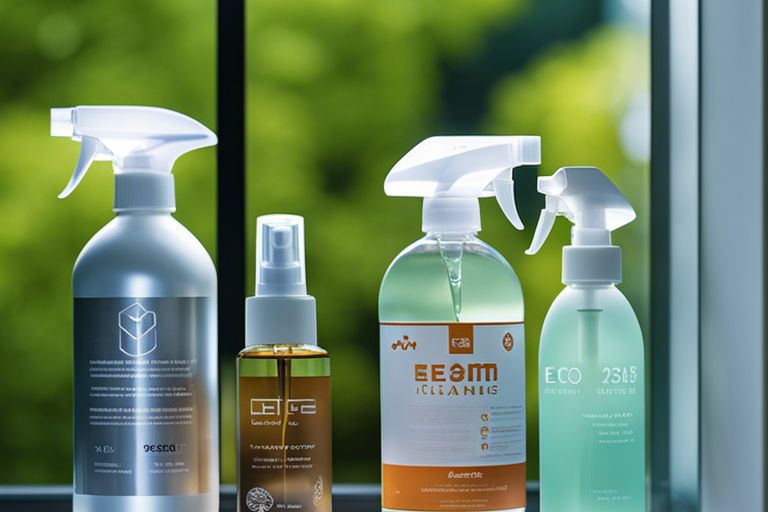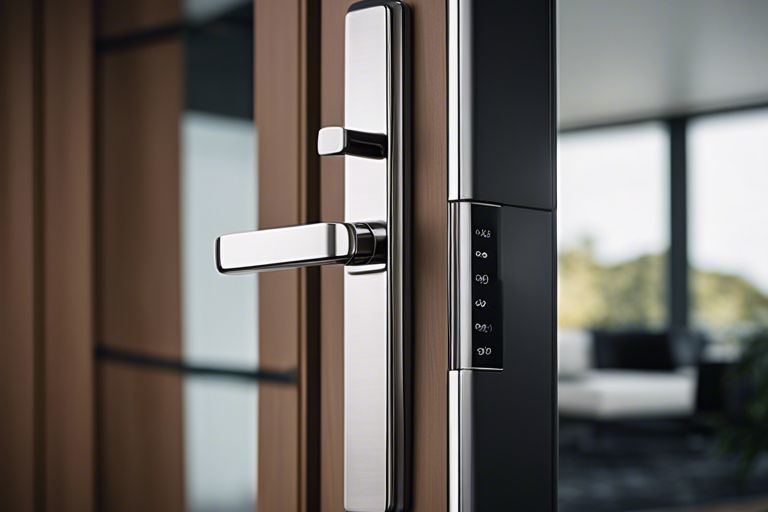When it comes to customising flat rooflights for your property, selecting the right glazing and frame options is crucial. Choosing the correct glazing can significantly impact energy efficiency, natural light flow, and the overall aesthetic of your space. Opting for high-quality frames ensures durability, weather resistance, and security. It is essential to consider thermal performance, sound insulation, and safety features when customising your flat rooflights. Stay informed about the options available to make the best choice for your property.
Key Takeaways:
- Glazing options: Consider different types of glass such as toughened, laminated, or self-cleaning when customising flat rooflights to suit your needs and preferences.
- Frame options: Choose between aluminium or PVCu frames based on factors like durability, aesthetics, and energy efficiency for your flat rooflight design.
- Enhanced features: Explore additional features like noise reduction, solar control, or tinted glass to enhance the functionality and performance of your customised flat rooflights.
Glazing Options for Flat Rooflights
When customising your flat rooflights, one of the most crucial decisions to make is the choice of glazing options. The type of glazing material and technology you select will determine the performance, aesthetics, and energy efficiency of your rooflights.
Types of Glazing Materials
Choosing the right glazing material is essential for the overall functionality and appearance of your flat rooflights. The most common types of glazing materials used for rooflights include:
- Glass: Traditional and transparent, offering excellent clarity and UV protection.
- Polycarbonate: Lightweight and durable with good thermal efficiency and impact resistance.
- Acrylic: Lightweight and shatter-resistant, providing good insulation properties.
- Composite: Combining different materials for enhanced performance and aesthetics.
- Multi-wall Polycarbonate: Providing superior thermal insulation and strength compared to standard polycarbonate.
Recognising the unique properties of each glazing material is crucial in selecting the most suitable option for your flat rooflights. Whether you prioritise aesthetics, energy efficiency, or durability, there is a material that will meet your specific requirements.
Benefits of Different Glazing Technologies
Advanced glazing technologies offer a range of benefits that can enhance the performance and longevity of your flat rooflights. Each glazing technology comes with its unique advantages, such as:
- Low-E Coatings: Improving thermal efficiency by reflecting heat back into the room.
- Self-Cleaning Glass: Reducing maintenance efforts by breaking down organic dirt with UV light.
- Argon Gas Filling: Enhancing insulation properties by reducing heat loss through the glazing.
- Warm Edge Spacer Bars: Minimising heat transfer and condensation around the edges of the glazing unit.
- Integrated Blinds: Providing privacy and light control within the glazing unit.
Understanding the benefits of different glazing technologies is essential in making an informed decision when customising your flat rooflights. The right technology can significantly improve the energy efficiency, comfort, and aesthetics of your living or working spaces.

Frame Materials and Designs
Aluminium Frames
Aluminium frames are a popular choice for flat rooflights due to their strength, durability, and modern aesthetic. They offer excellent weather resistance and require minimal maintenance, making them ideal for long-lasting installations. Aluminium frames can be powder-coated in a variety of colours to match the design of the building, providing a sleek and customisable option for homeowners.
Furthermore, aluminium frames are known for their slim profiles, allowing for maximum natural light ingress without compromising on structural integrity. This makes them a popular choice for contemporary architecture and spaces that require a seamless connection between indoor and outdoor areas.
PVC and Other Frame Materials
PVC frames and other composite materials are also common choices for flat rooflights. While they may not offer the same level of strength as aluminium frames, they provide excellent thermal insulation properties, helping to improve energy efficiency in a building. PVC frames are low maintenance and cost-effective, making them a practical option for budget-conscious projects.
When considering PVC and other frame materials, it is essential to assess the specific requirements of the installation. While aluminium frames offer superior strength and design flexibility, PVC frames excel in insulation and affordability. By understanding the priorities of the project, homeowners and architects can make an informed decision on the most suitable frame material for their flat rooflight.
Customisation and Aesthetics
Color and Finish Options
When customising flat rooflights, one of the key choices to make is the colour and finish of the frame. This decision can dramatically impact the overall aesthetics of the rooflight and its integration into the surrounding architecture. Options range from sleek black frames that create a modern look to subtle grey finishes that blend seamlessly with traditional buildings. Choosing the right colour and finish can help you achieve the desired aesthetic for your property, whether you want the rooflight to stand out as a design feature or to discreetly complement the existing style.
It is essential to consider the external façade of the building when selecting the colour and finish of flat rooflights. Harmonising the frame with the existing architectural elements can create a cohesive and visually pleasing look. Additionally, certain finishes, such as metallic or textured coatings, can add a touch of luxury and sophistication to the rooflight, enhancing the overall appeal of the design.
Incorporating Rooflights into Building Design
Integrating rooflights into the building design offers numerous benefits beyond just providing natural light. Strategic placement of rooflights can help reduce the reliance on artificial lighting, saving energy and lowering utility costs. Furthermore, rooflights can enhance the interior spaces by creating a sense of openness and connection to the outdoors, improving the overall ambience and boosting occupant wellbeing.
When incorporating rooflights into building design, it is crucial to work closely with architects and designers to ensure seamless integration. Considering factors such as placement, size, and orientation can maximise the benefits of rooflights while maintaining the structural integrity of the building. By carefully planning the incorporation of rooflights, you can elevate the aesthetics and functionality of the space, creating a truly bespoke and sophisticated design.

Technical Considerations and Performance
Thermal Efficiency and U-Values
When it comes to customising flat rooflights, one of the key technical considerations is thermal efficiency. The U-value of a rooflight indicates how effective it is as an insulator. The lower the U-value, the better the thermal performance of the rooflight, as it will help to reduce heat loss and energy consumption. High-quality glazing materials and well-insulated frames play a crucial role in improving thermal efficiency.
Choosing a rooflight with a low U-value not only enhances the comfort of the living space below by reducing cold spots and draughts but also contributes to environmental sustainability by lowering carbon emissions. It is essential to select glazing and frame options that offer optimal thermal performance to create a more energy-efficient building.
Weather Resistance and Durability
Another vital aspect to consider when customising flat rooflights is their weather resistance and durability. Flat rooflights are exposed to the elements all year round, so it is crucial to select materials that can withstand harsh weather conditions. Opting for high-quality, weather-resistant glazing and robust frames will ensure longevity and performance in challenging environments. Aluminium frames are known for their durability and resistance to corrosion, making them a popular choice for flat rooflights.
Additionally, choosing rooflights that have been tested for weather tightness and durability in various conditions will provide peace of mind regarding their long-term performance. Ensuring that the rooflights are installed correctly by professionals is key to maximising their weather resistance and durability.

Conclusion: Customising Flat Rooflights – Glazing and Frame Options
Choosing the right glazing and frame options for your flat rooflight is crucial in enhancing both the aesthetics and performance of your space. From double or triple-glazed options for improved thermal efficiency to frame finishes that complement your design scheme, customising your rooflight allows you to create a unique and functional feature for your property. Understanding the various glazing types, such as self-cleaning or solar control, can help you select the best option to suit your specific requirements. Additionally, exploring different frame materials like aluminium or uPVC can further tailor your rooflight to match your style and budget. By carefully considering these customisation options, you can transform your space with a bespoke flat rooflight that not only adds value but also maximises natural light and energy efficiency in your home or commercial building.
FAQ
Q: What are the glazing options available for customising flat rooflights?
A: When customising flat rooflights, you can choose from a range of glazing options such as double-glazed, triple-glazed, self-cleaning glass, solar control glass, and laminated glass. Each option offers unique benefits in terms of insulation, UV protection, and maintenance.
Q: What frame options can be selected when customising flat rooflights?
A: There are various frame options to consider when customising flat rooflights, including aluminium, uPVC, timber, and composite materials. Each frame material has its own characteristics in terms of durability, aesthetics, and thermal performance, allowing you to choose the most suitable option for your project.
Q: How do I decide on the best combination of glazing and frame options for my custom flat rooflights?
A: To determine the best combination of glazing and frame options for your custom flat rooflights, consider factors such as energy efficiency, aesthetics, budget, and maintenance requirements. Consult with a reputable supplier or manufacturer who can provide expert advice tailored to your specific needs and preferences.






